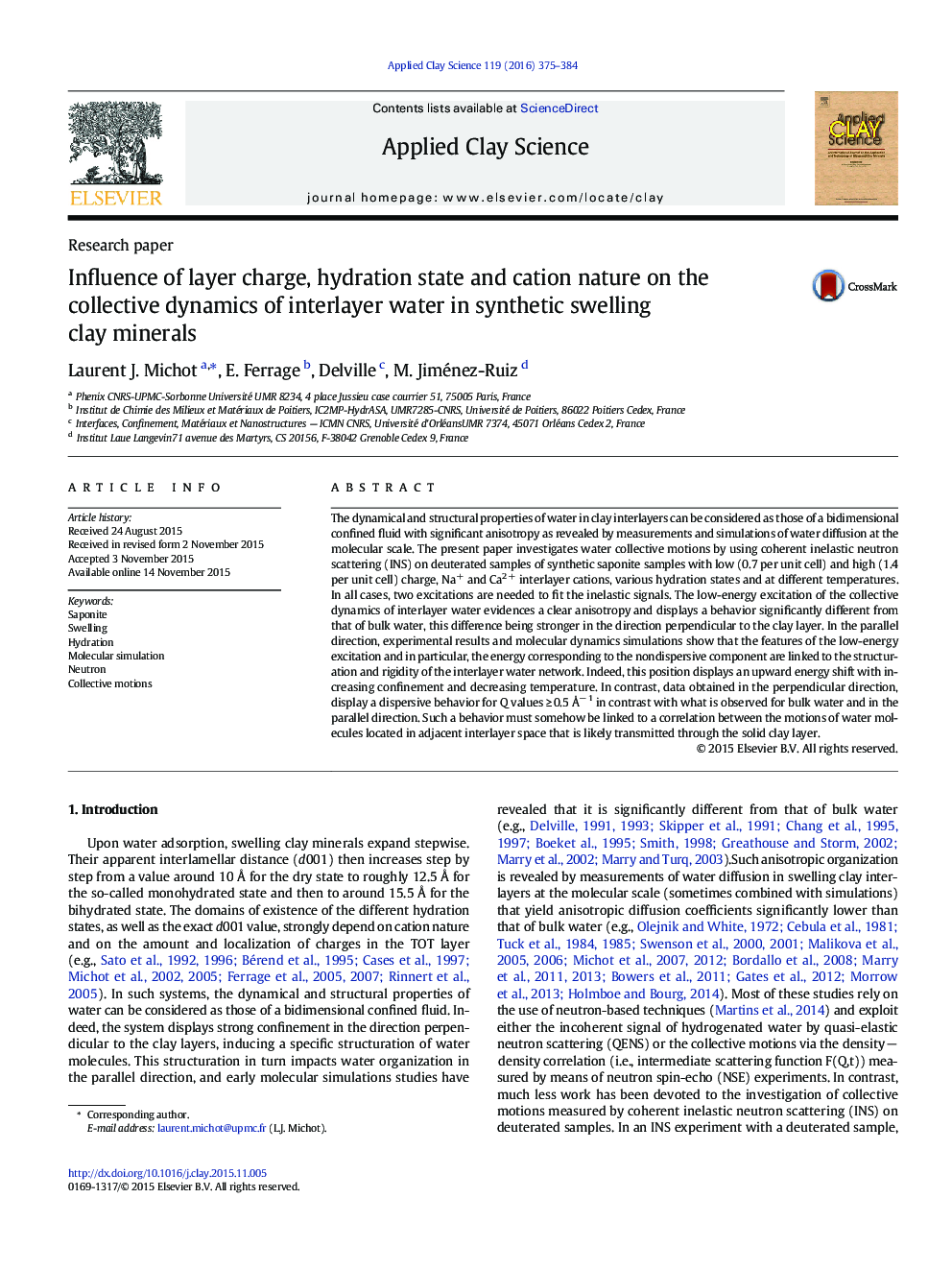| کد مقاله | کد نشریه | سال انتشار | مقاله انگلیسی | نسخه تمام متن |
|---|---|---|---|---|
| 1694231 | 1011807 | 2016 | 10 صفحه PDF | دانلود رایگان |
• INS measurements for different saponite samples reveal significant anisotropy of collective motions.
• Measurements in the parallel direction probe the structure of the interlayer water and are confirmed by MD simulations.
• Perpendicular measurements suggest correlation between motions of water molecules located in adjacent interlayer spaces.
The dynamical and structural properties of water in clay interlayers can be considered as those of a bidimensional confined fluid with significant anisotropy as revealed by measurements and simulations of water diffusion at the molecular scale. The present paper investigates water collective motions by using coherent inelastic neutron scattering (INS) on deuterated samples of synthetic saponite samples with low (0.7 per unit cell) and high (1.4 per unit cell) charge, Na+ and Ca2 + interlayer cations, various hydration states and at different temperatures. In all cases, two excitations are needed to fit the inelastic signals. The low-energy excitation of the collective dynamics of interlayer water evidences a clear anisotropy and displays a behavior significantly different from that of bulk water, this difference being stronger in the direction perpendicular to the clay layer. In the parallel direction, experimental results and molecular dynamics simulations show that the features of the low-energy excitation and in particular, the energy corresponding to the nondispersive component are linked to the structuration and rigidity of the interlayer water network. Indeed, this position displays an upward energy shift with increasing confinement and decreasing temperature. In contrast, data obtained in the perpendicular direction, display a dispersive behavior for Q values ≥ 0.5 Å− 1 in contrast with what is observed for bulk water and in the parallel direction. Such a behavior must somehow be linked to a correlation between the motions of water molecules located in adjacent interlayer space that is likely transmitted through the solid clay layer.
Journal: Applied Clay Science - Volume 119, Part 2, January 2016, Pages 375–384
